
The Teacher CPD Academy has a new addition. Introducing The CPD Suite.
Deliver great staff training in house, with presentations designed by @mrspearce.bsky.social
✅ Evidence-informed
✅ Editable
✅ Trusted high quality
✅ Save time, increase impact
DM me for a free trial
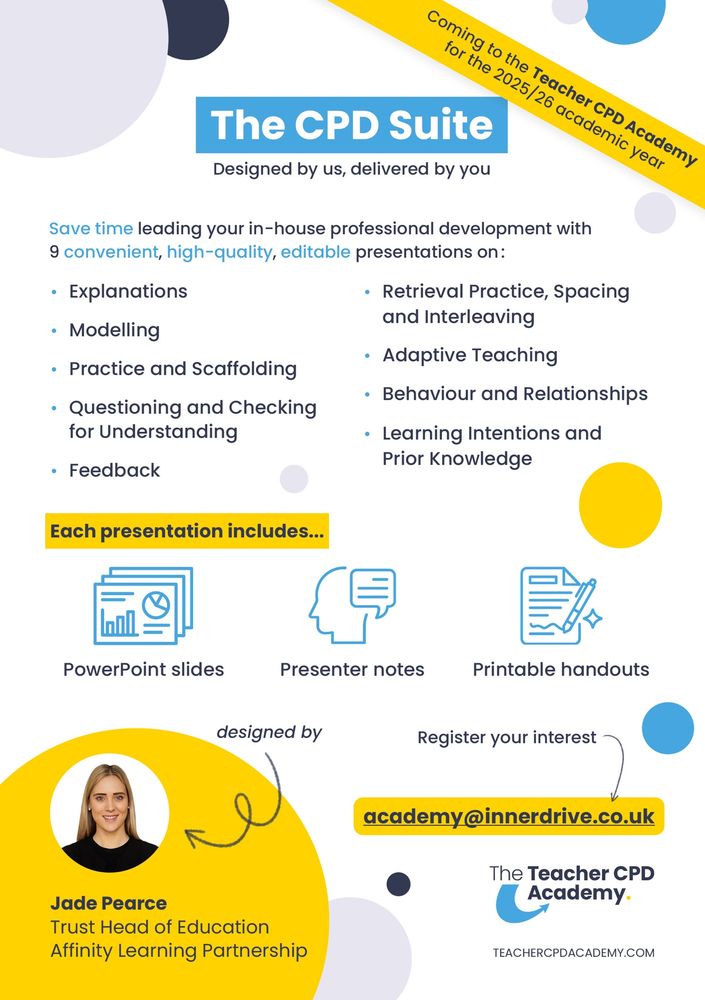
The Teacher CPD Academy has a new addition. Introducing The CPD Suite.
Deliver great staff training in house, with presentations designed by @mrspearce.bsky.social
✅ Evidence-informed
✅ Editable
✅ Trusted high quality
✅ Save time, increase impact
DM me for a free trial
Designed by us, delivered by you. A ready-to-use toolkit for delivering brilliant, evidence-informed teacher CPD, without starting from scratch.
Here’s how it works 🧵👇
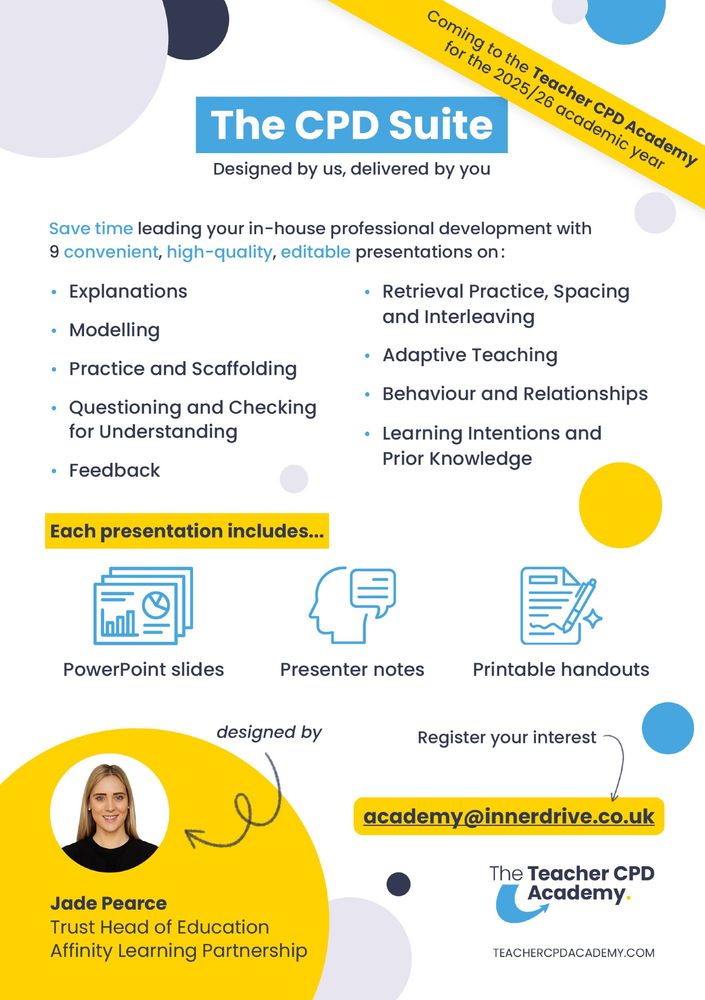
Designed by us, delivered by you. A ready-to-use toolkit for delivering brilliant, evidence-informed teacher CPD, without starting from scratch.
Here’s how it works 🧵👇
✅Adaptive teaching v differentiation
✅Clear learning intentions
✅Prior knowledge
✅Adaptive explanations
✅Adaptive modelling
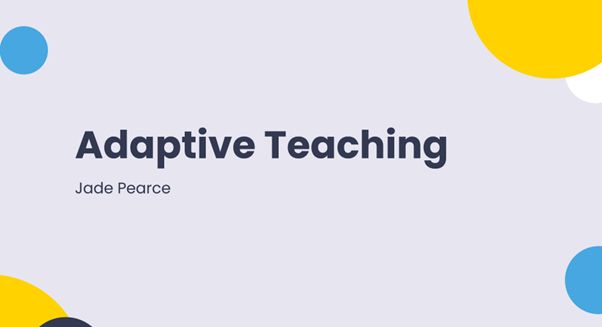
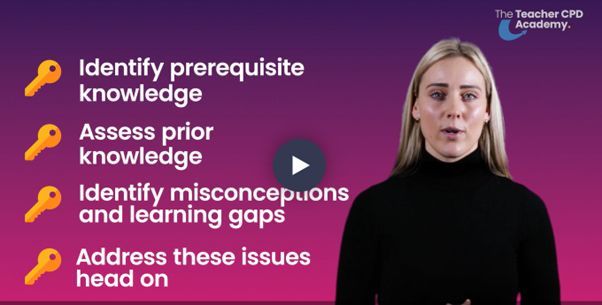
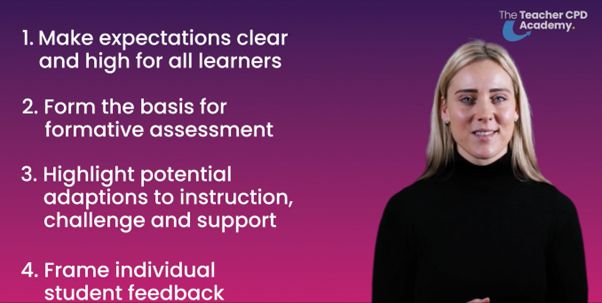
✅Adaptive teaching v differentiation
✅Clear learning intentions
✅Prior knowledge
✅Adaptive explanations
✅Adaptive modelling
Adaptive teaching is crucial to high quality, inclusive education that enables pupils to achieve success. So, what is adaptive teaching, when does it take place and how can it be implemented?
Adaptive teaching is crucial to high quality, inclusive education that enables pupils to achieve success. So, what is adaptive teaching, when does it take place and how can it be implemented?
-Explanations that build on and explicitly link to pupils' prior knowledge
- Questioning for listening, rehearsal and understanding during explanations
-Use of graphics, examples 1/
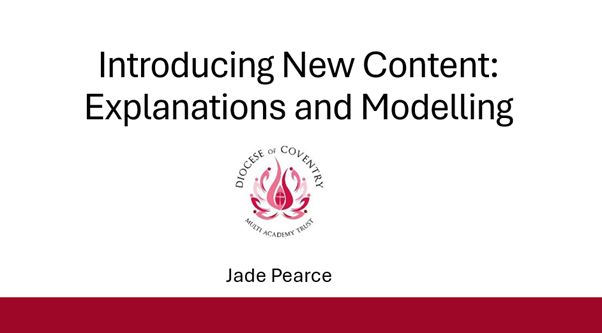
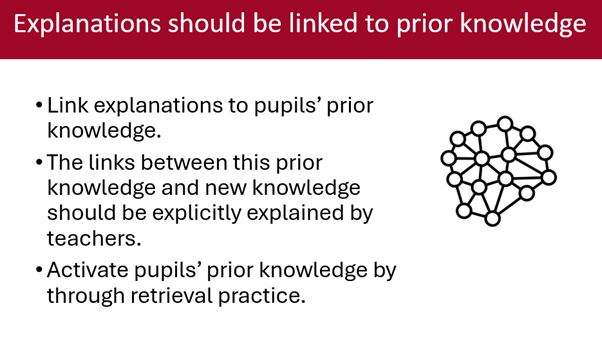
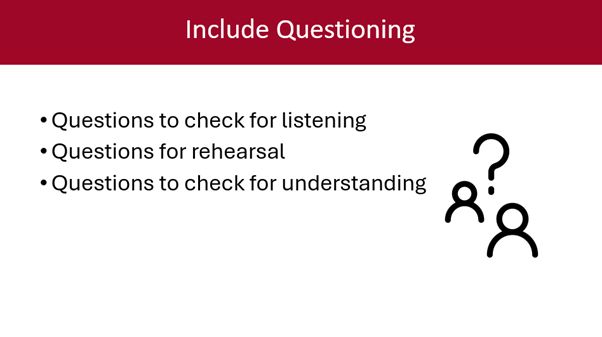
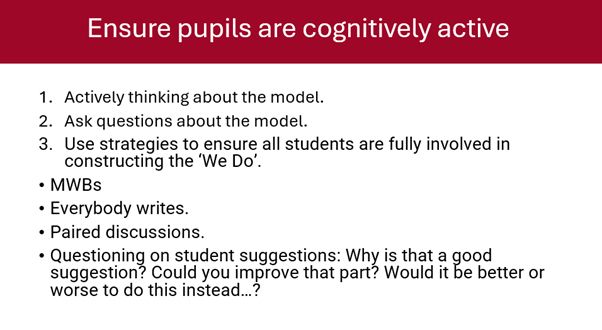
-Explanations that build on and explicitly link to pupils' prior knowledge
- Questioning for listening, rehearsal and understanding during explanations
-Use of graphics, examples 1/
⬆️ Identifying priorities
✍️Implementation
🧠Creating a developmental and learning culture
⬆️ Identifying priorities
✍️Implementation
🧠Creating a developmental and learning culture
📚 Retrieval Practice
🔄 Interleaving
🧠 Cognitive Load Theory
🤖 AI
💬 Oracy
🌟 And much more!
Get your subscription to the 2025 Teaching & Learning Spotlight 🔽
spotlight2025.eventbrite.co.uk

📚 Retrieval Practice
🔄 Interleaving
🧠 Cognitive Load Theory
🤖 AI
💬 Oracy
🌟 And much more!
Get your subscription to the 2025 Teaching & Learning Spotlight 🔽
spotlight2025.eventbrite.co.uk




And Effective modelling 👇🏻👇🏻👇🏻
@mrspearce.bsky.social , one of our amazing ELEs, explains evidence informed strategies and how they can be applied in the classroom.
Subscribe to the series by clicking on the link below👇
shorturl.at/GnaQv


And Effective modelling 👇🏻👇🏻👇🏻


👩🏫Examining why the qual of teaching is so important
🧠Our collective view of what excellent T&L looks like
📚Engaging with research to add specific aspects of effective practice to each Principle 1/2
👩🏫Examining why the qual of teaching is so important
🧠Our collective view of what excellent T&L looks like
📚Engaging with research to add specific aspects of effective practice to each Principle 1/2
Today: five principles of learning
#edpsychs #edusky


Today: five principles of learning
#edpsychs #edusky

1. Explain it again
2. Ask a similar question to check understanding
3. Ask a similar question next week and in homework.
Thanks, Jo!
1. Explain it again
2. Ask a similar question to check understanding
3. Ask a similar question next week and in homework.
Thanks, Jo!

I have found that task design is something that isn’t focused on as much in T&L frameworks or discussions, despite its importance for encoding and long-term learning. A small thread on effective task design below:
I have found that task design is something that isn’t focused on as much in T&L frameworks or discussions, despite its importance for encoding and long-term learning. A small thread on effective task design below:
1. Chunk the model into parts, performing the I do-We do-You do for one chunk before going back to the I do-We do-You do for chunk 2. This prevents cognitive overload from having to remember a large amount of steps/content in their working memories.
1. Chunk the model into parts, performing the I do-We do-You do for one chunk before going back to the I do-We do-You do for chunk 2. This prevents cognitive overload from having to remember a large amount of steps/content in their working memories.
1. Chunk the model into parts, performing the I do-We do-You do for one chunk before going back to the I do-We do-You do for chunk 2. This prevents cognitive overload from having to remember a large amount of steps/content in their working memories.
Dive into 10 recent studies and their classroom implications here 👇
www.innerdrive.co.uk/teaching-lea...
#Edusky

Dive into 10 recent studies and their classroom implications here 👇
www.innerdrive.co.uk/teaching-lea...
#Edusky
@davidbartram.bsky.social
@mrspearce.bsky.social
@kathrynmorgan.bsky.social
@rlrossi64.bsky.social
@psalisbury.bsky.social
Some of the most authentic, lovely and interesting people.
❤️❤️❤️
@davidbartram.bsky.social
@mrspearce.bsky.social
@kathrynmorgan.bsky.social
@rlrossi64.bsky.social
@psalisbury.bsky.social
Some of the most authentic, lovely and interesting people.
❤️❤️❤️


